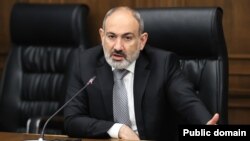The International Monetary Fund insisted as recently as on April 29 that economic growth in Armenia will slow down to about 1.5 percent due to the fallout from the bloody conflict. The Armenian Central Bank forecast a virtually identical growth rate in mid-March, three weeks after the start of the Russian invasion of Ukraine.
The World Bank predicted an even sharper slowdown in a report released on April 11. The bank pointed to the South Caucasus country’s close economic ties with Russia, its number one trading partner hit by sweeping Western sanctions.
Pashinian said, however, that he expects the domestic economy to perform much better in 2022. He cited key macroeconomic data recorded by his government in the first four months of the year.
According to the government’s Statistical Committee, GDP growth accelerated to 8.6 percent in the first quarter and continued unabated in April on the back of sharps gains in the services and construction sectors. By contrast, Armenian industrial output shrunk by about 7 percent year on year in March and rebounded only marginally in April.
Addressing pro-government lawmakers in Yerevan, Pashinian indicated that he hopes to keep up the growth in the months ahead with capital projects financed from the state budget.
“My instruction and mood is that we must concentrate on the execution of our budget, especially capital spending, so that we manage to meet our target of 7 percent economic growth,” he said.
Tadevos Avetisian, an opposition lawmaker and economist, dismissed Pashinian’s projection, saying that spillover effects of the war in Ukraine have not yet reached Armenia.
Avetisian downplayed the significance of official macroeconomic statistics for January-April 2022. He argued that the Armenian economy contracted in the first quarter of 2021.
